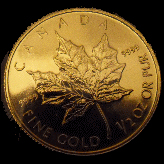Hyperinflation and Gold: Losing Faith in the Dollar
by Jerry WhiteBuying gold as a hedge against inflation and hyperinflation is a recurring theme whenever general price levels rise. We know that inflation of the money supply produces rising prices. But what exactly is hyperinflation and how can you protect against its effects?
Is hyperinflation just an excess of inflation, like prices rising more than some arbitrary amount, say over 50%? Or does it have a less technical definition? Will we even know it when we see it? We certainly have a classic picture of it in our minds: Pushing a wheelbarrow full of paper currency through the streets a la Weimar Germany.
But if we want to hedge against it, we should really understand what it is, be able to describe it clearly, and more importantly, be able to recognize it if it should happen.
What is inflation and why is it a problem?
Inflation is an increase in the money supply that inevitably leads to a general rise of prices for goods and services. Keynesians, who favor expanding credit to stimulate the economy, believe that moderate inflation is good for the economy because over time everyone’s wages rise, so they can buy more goods and invest in businesses. But at the same time, this demand for more goods pushes their prices up, so purchasing power remains about unchanged. Actually, not quite unchanged because taxes take a chunk out of both wages and gains on investments. This means that, on average, we never get ahead, and gains are illusory.
Why is inflation a problem? Offsetting the economic stimulation of inflation is its pernicious effect on the purchasing power of those whose wages can't keep up: retired people on fixed pensions, those in low-wage jobs, the poor generally, and the unemployed. It is also a problem when government reports that the official inflation rate (determined by the Consumer Price Index in the US, on which Social Security income increases are based) is less than the actual rise in consumer prices. This happens because of the distortions of the CPI calculation (principally implied rent rather than housing prices, hedonic pricing that reduces the index due to quality improvements, geometric weighting, and seasonal adjustments — all statistical fudges by the Bureau of Labor Statistics).
The CPI is reported both with and without changes in food and energy costs because they are deemed too volatile to use for measuring the cost of living. In addition, rising costs of raw materials, which are reflected in the Producer Price Index, affect the profitability of businesses, their ability to raise wages, and the cost to the public of their products that may not be included in CPI.
Why is gold a hedge against inflation? The market price of gold rises, along with prices of other commodities that are in limited supply, in the face of an increasing money supply. One of the obvious truths of gold and silver investing is that holding precious metals protects against inflation because prices of commodities will rise as the money supply expands. Even the prices of agricultural crops will rise in the short run, but in most cases their supply can be increased (over time) by planting and harvesting more crops. Because the supply of gold is limited, however, it has traditionally and reliably been a store of value in the face of inflation.
What is hyperinflation
Prices rise in a hyperinflationary environment too, but they rise not because of stimulative growth in the money supply. At some point people see that the value of their currency is deteriorating and they want less of it expressly because it is not a store of value. They are actively trying to get rid of the currency as rapidly as possible. As a result they will pay just about anything to get rid of the currency as it tumbles in value. This was the case in John Law’s France in 1720 and in Germany (and elsewhere in Europe) in 1923, and in some South American and African countries since.
So hyperinflation results from loss of faith in the currency.
It is clear why gold is a hedge against hyperinflation. It represents a way to get out of the currency as well as being an asset that will appreciate as the currency is devalued. Gold prices continue to rise in a hyperinflationary environment as others dump their currency to buy gold. But is hyperinflation a realistic risk in the US?
What is the risk of hyperinflation in the US?
In a severe recession the decline in purchasing power due to falling asset prices (deflation) reduces wealth, so consumers conserve cash and spend less. Falling asset prices discourage new investment and are hard to reverse, so the Fed’s policy has been to add liquidity to the economy both to boost asset prices and to encourage lending.
By increasing the money supply, the Fed encourages dollar weakness in relation to other currencies, thus helping US exports and making imported goods more expensive. But as the dollar falls, Americans will choose to protect their wealth by exchanging dollars for commodities, especially for precious metals, which have proven to be a reliable hedge against erosion of currency values.
In addition, foreign central banks, which hold dollar-denominated debt as a large part of their reserves, will find ways to reduce their holdings of dollars in favor of gold, putting more downward pressure on the dollar and upward pressure on the price of gold. In fact, it has been reported that European central banks — which had in the past been selling gold from their reserves — have stopped doing so, and that China’s central bank and several other central banks have been increasing their holdings of gold.
Quantitative easing and the Treasury bond bubble
Finally, and most dangerously, through the mechanism of quantitative easing — buying government debt (Treasury bonds) in order to keep interest rates low and expand liquidity — the Fed inflates Treasury bond prices. If this Treasury debt bubble bursts, the result will be a further rush to commodities in a hyperinflationary attempt to dump dollars.
And you might then see people pushing wheelbarrows of dollar bills through the streets. People whose families faced starvation and lost major portions of their wealth due to hyperinflation in Europe of the 1920’s tend to keep a share of their assets in gold today because gold is one of the very few safe-haven investments that can preserve buying power in the face of hyperinflation.

Precious Metals Investor’s Guide from TradersGame.com
To learn to invest in gold and silver, avoid pitfalls and save money by buying the form that is appropriate rather than one a salesman wants to sell you, read our precious metals investor’s guide, How to Buy Gold and Silver Today. Read it tonight and start protecting your purchasing power tomorrow.
Articles
Who Sets the Prices of Precious Metals?
Why a Rising Gold Price is Bad News
Hyperflation and Gold: Losing Faith in the Dollar
Invest in Gold to Preserve Your Purchasing Power
Buying Gold to Meet your Investment Goals
Pitfalls to Avoid When Investing in Gold
Making your First Silver Trade
Investing in Platinum-Group Metals
Will the US Government Confiscate Your Gold?

